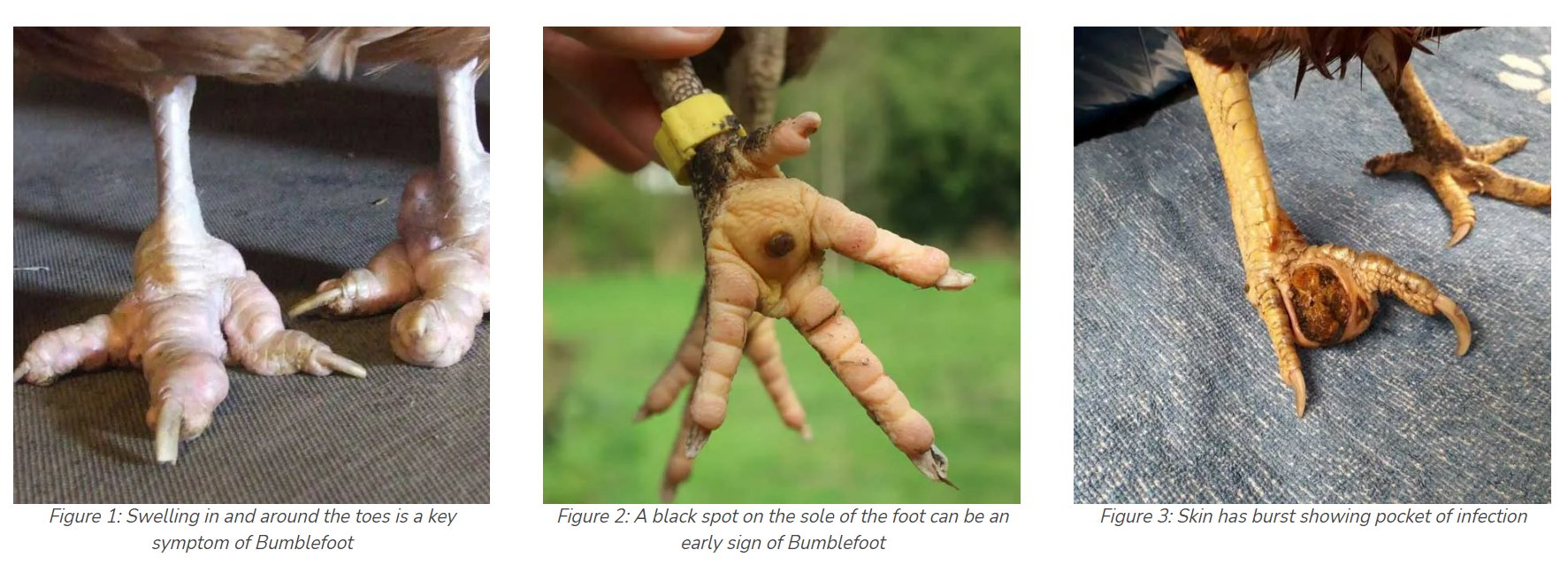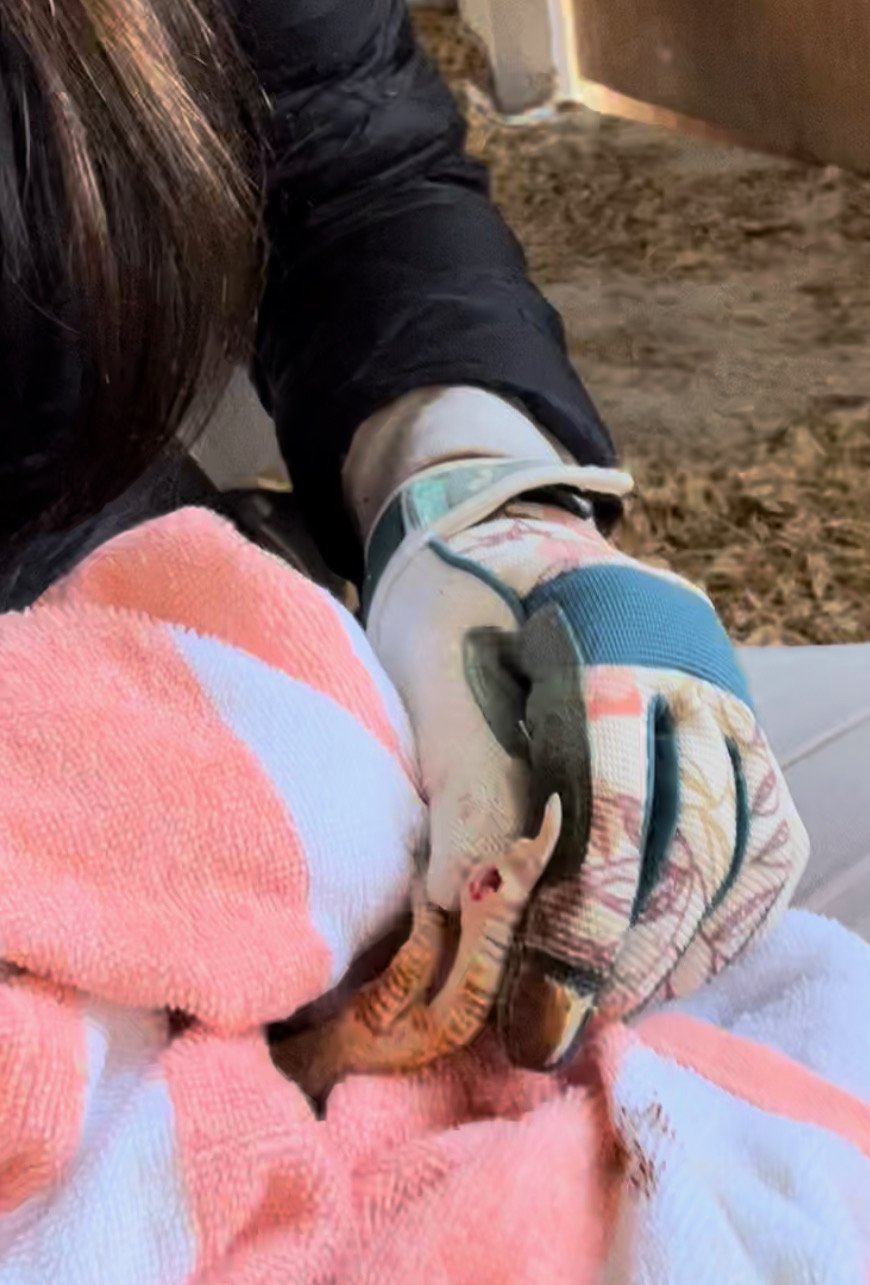Bumblefoot in Chickens: How To Treat it Naturally and Surgically
Since getting chickens years ago, I have learned many things about their habits, personalities, traits, preferences, diet requirements, and health issues.
One of these health issues that pop up once in a while is bumblefoot. Bumblefoot in chickens is not that common, but if one of your beloved feathered friends gets it, don’t fear, friend as it can be treated naturally or surgically, depending on the severity.
Continue reading to learn what bumblefoot is, what causes it, the symptoms of bumblefoot, and how to treat bumblefoot in chickens naturally and surgically.
WHAT IS BUMBLEFOOT?
Bumblefoot is technically a staph infection, where bacteria has entered the chicken's foot through a cut or scrape.
It starts with an infection in the foot or toes but can travel up the leg and be fatal if it spreads to other tissue & bones.
The most common way for chickens (or ducks) to get bumblefoot is by stepping on sharp objects such as stones, splinters, nails, or even pine cones while foraging and scratching.
It can also be caused by a hard landing from a high roosting pole. Always ensure your roosting poles are less than 18 inches from the ground and splinter-free.
Poor, soiled, and wet bedding or muddy and flooded grounds can also cause infections leading to bumblefoot.
Down below, you’ll find what symptoms to look out for and how to treat bumblefoot in chickens.
SYMPTOMS OF BUMBLEFOOT
Bumblefoot is usually relatively easy to spot. Signs that you need to look out for include limping and a puffy, swollen foot or toe, and sometimes even legs if the infection is severe. The most tell-tale sign would be a black scab where the infection is.
I have had cases where there was no black scab but a definitive bump with a discolored area in the middle. It may appear more tan yellow than a healthy pink color.
You may also see an actual wound or abrasion, redness between the toes, or inflammation of the whole foot or leg.
The middle part of the infection is basically dead tissue, which is like a plug and called the kernel.
Another thing I have learned over the years is that if I inspect my flock regularly for any abnormalities, I can quickly identify when something is wrong.
Checking their feet often helps me to treat any infections asap. The sooner bumblefoot is caught, the easier it is to treat.
WARNING! Graphic images following
Images from British Hen Welfare Trust
HOW TO TREAT BUMBLEFOOT IN CHICKENS
Natural treatment for bumblefoot
We always strive to treat bumblefoot as naturally as possible (depending on how severe it looks).
Supplies needed:
Epsom Salt
Chamomile (optional)
Bath Towel
Basin
Gloves
Neosporin
Duoderm
Vet Wrap
Steps:
My first step would be to treat it for a few days by soaking the foot in an Epsom salt and chamomile bath.
Wrap your chicken securely in a towel with the foot open.
Soak 1-2 times daily for about 10–15 minutes at a time. For our latest case of bumblefoot, I soaked it for five days.
After soaking for a while, you can try to scrape off the scab and remove the kernel without aggressive intervention.
Gently push around the kernel to try and get it out. Be careful not to push too hard or force it, as you may cause more harm and cause the infection to spread even further.
If it struggles to come out, soak a few more times and try again.
You could also add some charcoal poultice or Prid (a common drawing salve) after soaking to help draw out the infection and make removal much easier.
Once the kernel is out, clean the area very well with disinfectant or alcohol. Add Neosporin and apply Duoderm or a nonstick gauze.
Wrap it securely in place with the vet wrap.
Our lady having an epsom salt bath!
Surgical treatment for bumblefoot
With advanced cases of bumblefoot or no progress after a few days of soaking, you may need to consider surgical intervention.
If you've got no experience, I would recommend you get a poultry vet to show you how to remove the scab and kernel the first time you do it.
It's not that difficult of a procedure, and you can learn to do it yourself, but it can be intimidating. You'll want to be confident in the procedure to avoid any mistakes that hurt your chicken.
Surgical removal involves using a scalpel to remove the scab and cutting down into the sides to remove the kernel. It may be very complex, depending on the extent of the infection.
In all honesty, it's a bit of a gross task, so be prepared or have someone else do it if you can't handle disgusting things.
Supplies needed:
Epsom Salt
Bath Towel
Basin
Gloves
Rubbing alcohol
Scalpel
Hydrogen Peroxide
Neosporin or infection spray like Vetericyn Plus
Duoderm
Vet Wrap
Steps:
Securely wrap the chicken in the towel. It will help the chicken relax.
Soak the foot for 10–15 minutes in water and an Epsom salt mix to soften up the area.
Clean the area well with alcohol.
Have someone help you hold the chicken still while lying on its back.
Use the scalpel to remove the scab. If there is no visible scab, I'll remove some of the top layer (dead skin).
You can expect some bleeding; wipe it clean.
Try to gently push the kernel out by pressing it all around the sides.
A solid kernel may not always be present, and the infection may appear as a stringy, thread-like whiteish/yellowish tissue. Try to remove as much as you can.
Once it is out, clean the foot thoroughly with the peroxide.
Add Neosporin or antibiotic ointment.
Use the Duoderm or anti-stick gauze to cover the wound and wrap it with the vet wrap.
After Care
Aftercare is essential, whether you have removed the kernel naturally or surgically. Ensure you wrap the foot correctly and keep it dressed for at least 1–2 days before checking on the wound again.
It would be best to keep the chicken in a separate area (throughout treatment), making it easier to treat and change the dressings.
Recheck the wound, and maybe add more Neosporin if you feel the need. Wrap for another 3-4 days and check again. The wound may need to be wrapped for 7-10 days.
Once the wound has healed and closed up nicely, you can remove the dressing.
Depending on how bad the bumblefoot case was, the foot may never go back to 100% normal. But, the infection will be gone, and the chicken will be back to its regular routine in no time.
As I mentioned earlier, if you keep an eye on your flock daily, you will notice any problems right away.
Catching bumblefoot in chickens early on will save you much trouble and possible heartache.
I am also not a qualified vet, and it is always best to consult a professional if you are unsure. These suggested treatments are what have worked for us in the past.
Always follow your gut, and if you think you’ve got a very serious case of infection, call your vet sooner rather than later.
PIN FOR LATER
Love, Annette xx






